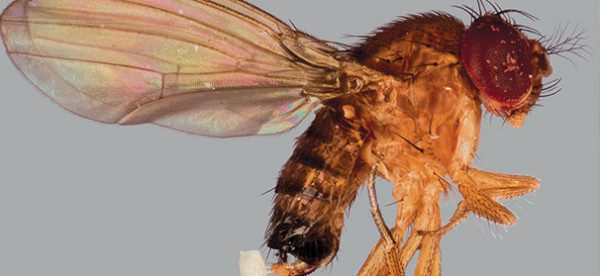

Nov 4, 2011BMSB and SWD continue to worry growers
Brown Marmorated Stink Bug (BMSB) and Spotted Wing Drosophila (SWD) have packed a serious one-two punch to the fruit industry recently, and as they continue to spread, so do fears that there is nothing that can stop them.
Both insects are native to Asia and managed to find their way to North America via shipping containers and other import vessels. At first, SWD was limited to Florida and parts of the West Coast, but it spread quickly. BMSB, being an adept hitchhiker, found a home in the Mid-Atlantic region and quickly spread out from there.
BMSB
In 1999, a BMSB specimen was found in a Rutgers University trap about 30 miles east of Allentown, Pa., in Milford, N.J. Since that time, specimens have been identified in at least 36 states, primarily in the Mid-Atlantic region but with additional populations in Oregon and southern California. Midwestern populations of BMSB were found in Ohio in 2007, Illinois in 2009 and Michigan in 2010. As with other invasive species, the distribution is likely spread wider than reported.
For one Deale, Md., peach grower, enough was enough. After watching his peach losses go from minor to more than 60 percent in a year, Frank Gouin threw in the towel. Gouin, a retired plant physiologist with the University of Maryland, will still raise Christmas trees. This winter, however, he plans to take a chainsaw to his peach trees.
There is hope, however. In a report recently published by Rutgers University and USDA, some headway in the fight against BMSB was reported. According to the report, the USDA team, under the leadership of entomologist Tracy Leskey, has made some discoveries about BMSB. They have found that populations of BMSB move from the wild into cultivated crops, creating a re-infestation issue – making BMSB a season-long problem, unlike some other pests.
The report also says that the greatest efficacy has been observed when BMSB adults come into direct contact with wet spray materials. It also says that it is highly likely only small portions of the adult population come into the direct contact with the wet spray deposits. Further adding to the troubles of from pest are the findings that pesticides labeled for native stink bugs are mostly ineffective against BMSB.
One other trait of BMSB mentioned in the report is especially troubling to Leskey. They exhibit avoidance behavior that shows they have the capacity to escape sprays and other treatments.
The report said Lannate demonstrates moderate to good efficacy in killing BMSB. Organophosphates have shown some potential, as well. One pyrethroid, bifenthrin, has also worked. Neonicotinoids showed significant insect recovery and are not recommended in the report.
The bug doesn’t seem to be spreading in at least one state. Jim Labonte, an entomologist with the Oregon Department of Agriculture, said it seems to have stopped spreading.
“As far as I know, no new counties since last year,” he said. “We tried several BMSB traps, along with the lure, and got nothing.”
SWD
SWD is a vinegar fly of East Asian origin that can cause damage to many fruit crops. This small insect has been in Hawaii since the 1980s, was detected in California in 2008, spread through the West Coast last year and was detected in Florida, Utah, the Carolinas and Michigan for the first time in 2010. Recent reports have them in Pennsylvania and as far north as Ontario, according to the Oregon State University’s (OSU) SWD website.
Because the flies are only a few millimeters long and cannot fly very far, natural dispersion between states is unlikely. Human-assisted transportation is a more likely cause of the recent rapid spread, according to Michigan State University’s (MSU) IPM report.
According to OSU, these flies can be trapped using a simple monitoring trap consisting of a plastic cup with several small holes around the upper side of the cup, leaving a 3- to 4-inch section without holes. The small holes allow access to vinegar flies, but keep out larger flies and moths. Pour 1 inch of apple cider vinegar into the trap as bait. To help ensure that trapped flies do not escape, a small yellow sticky trap can be placed inside.
Growers have two control options for SWD, according to OSU. They can use cultural controls by scheduling timely harvests and removing over-ripe fruit from fields to minimize hosts for SWD eggs. In small fields this can be done by hand, but that’s impractical in large farms. Post-harvest, a clean-up harvest should be done to remove all sources of host fruit.
The other control option is chemical. Growers should consult with their local Extension agents to see what is recommended for their specific areas. Unlike BMSB, there are several chemical options that have proven to be effective against SWD.
For more information on SWD, check out OSU’s website, and MSU’s IPM site.
For more information on BMSB, Penn State University has information on their BMSB website.
By Derrek Sigler, Associate Editor














